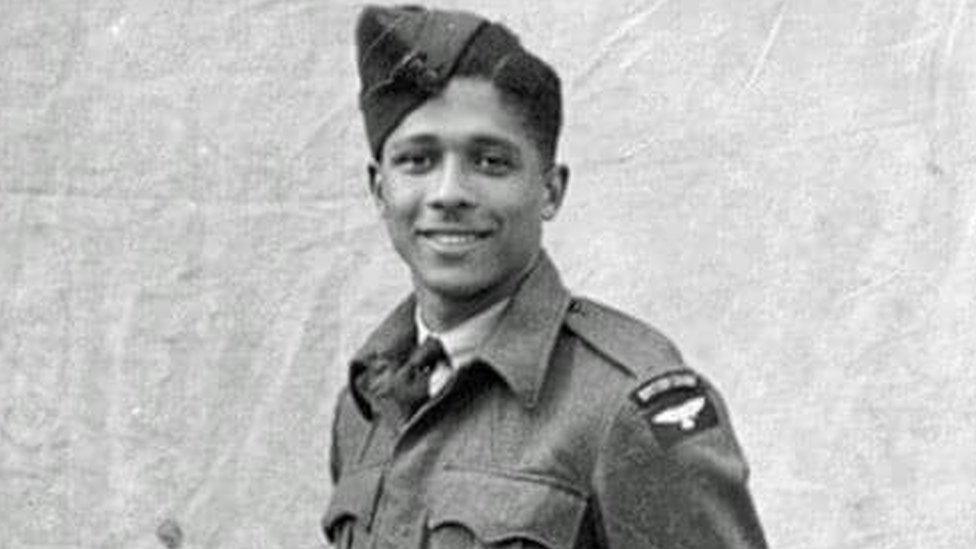Remembering Yorkshire's Caribbean WW2 volunteers

Around 4,000 recruits from what was then the British West Indies arrived in Yorkshire during World War Two
- Published
A plaque above a door on a building in a North Yorkshire seaside resort is the only memorial to thousands of men from the Caribbean who came to Filey during World War Two. The recruits were there train at RAF Hunmanby Moor, a former Butlin's holiday camp which had been requisitioned by the government.
"Caribbean people wanted to serve the mother country," said RAF veteran Donald Campbell.
He is the director of Forgotten Generations, which highlights the service of British African and Caribbean people.
"Initially there was a problem that they wanted to serve but because of the colour of their skin they weren't allowed to join the armed forces.
"So the colour bar was reduced, taken away, and then they were allowed to join."
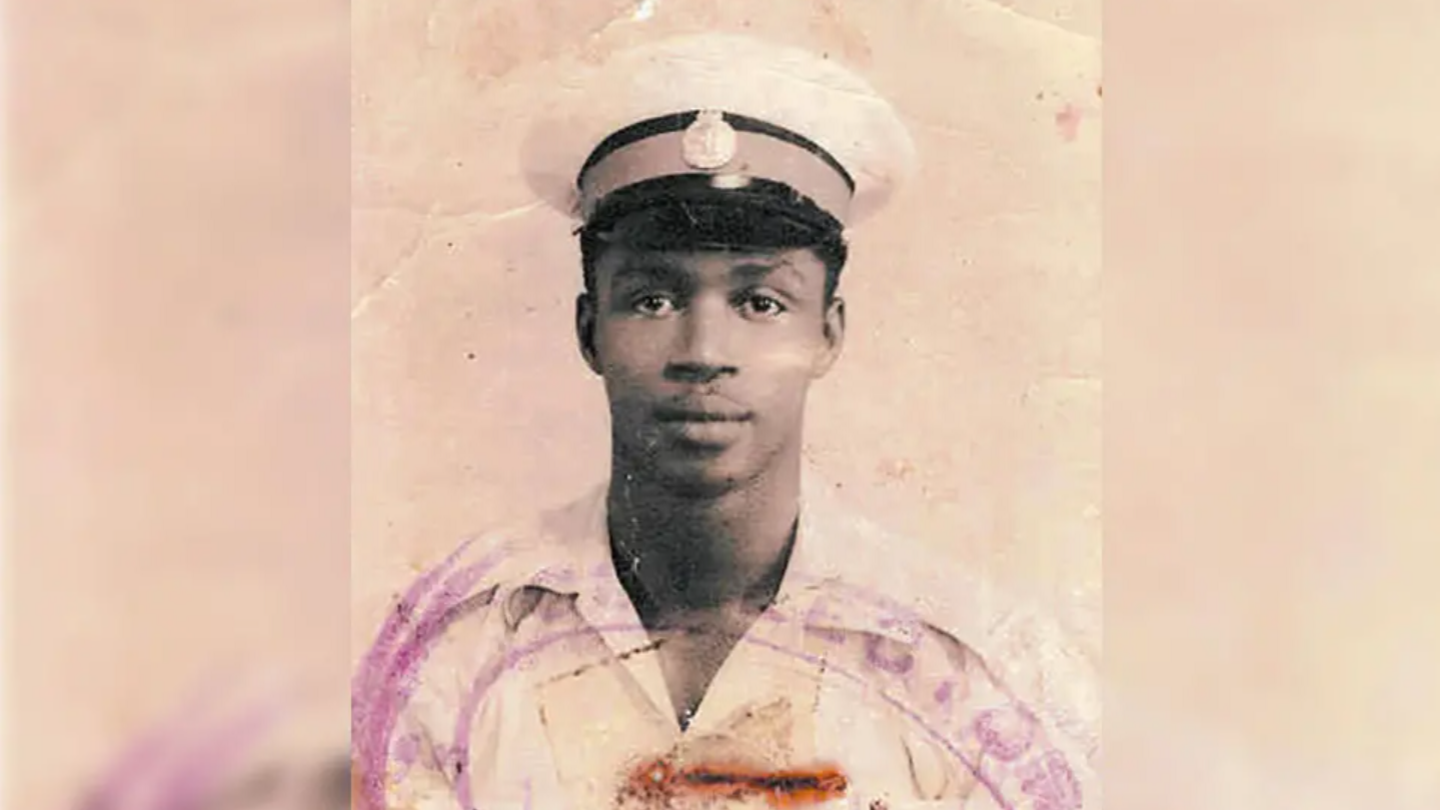
Gilmour Westcarr was demobbed and joined the Jamaica military police but he returned to the UK in 1952 and died in Gloucester in 2012
It is estimated that about 6,000 men came to the UK from Britain's Caribbean colonies to serve in the RAF. Among them were two of Glenn Parsons' uncles.
"One was Gilmour Westcarr and the other Edwin Samuals. They were both in their early 20s and both trained here at Filey and were dispersed off to other camps.
"They didn't have to come but they were proud to do so and proud to give service to the motherland, as it was then."
Mr Parsons said what was so "interesting and vital" about the story of Hunmanby Moor is that it was pre-Windrush - the era when large numbers of West Indians emigrated to Britain to fill post-war labour shortages.
"The perception is that black people only came to this country after World War Two to help in the rebuilding of the economy.
"But what is not said is that thousands came over here in the war and helped win that war and were instrumental in turning the tide in favour of Britain and its allies."
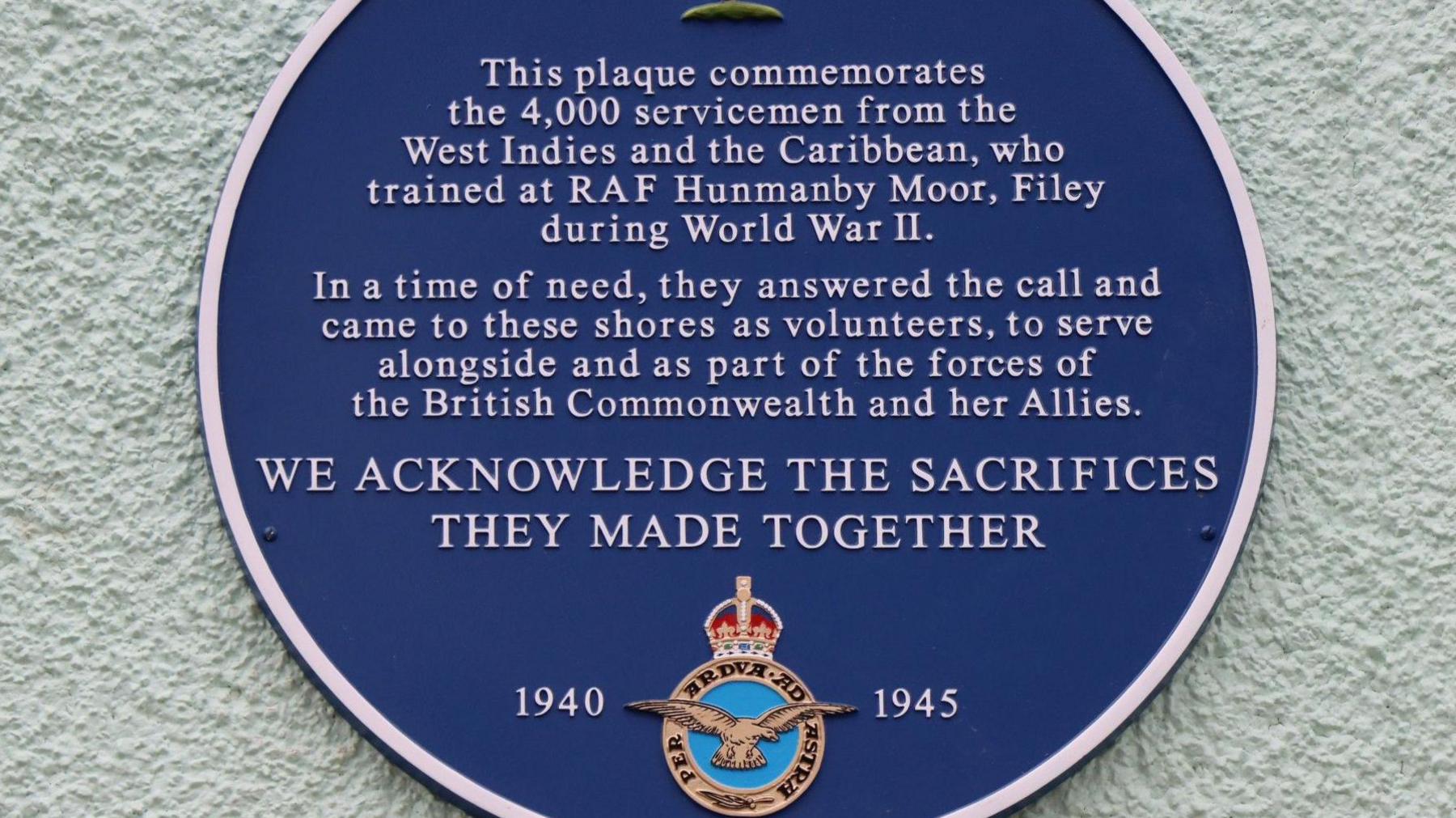
The plaque was installed on a house in Filey in 2023
Mr Campbell said the first contingent of Caribbean troops, numbering 2,000, came in the summer of 1944, followed by a second group later that year.
"A lot of them would have been really excited because it was an adventure.
"Some of those people heard the King's call for them to serve the country but some didn't, they just had a mate who said 'do you want to come along'."
About 4,000 of the recruits were sent to Hunmanby Moor for their initial training.
It would be 80 years before any memorial to them was erected to mark their service in Filey.
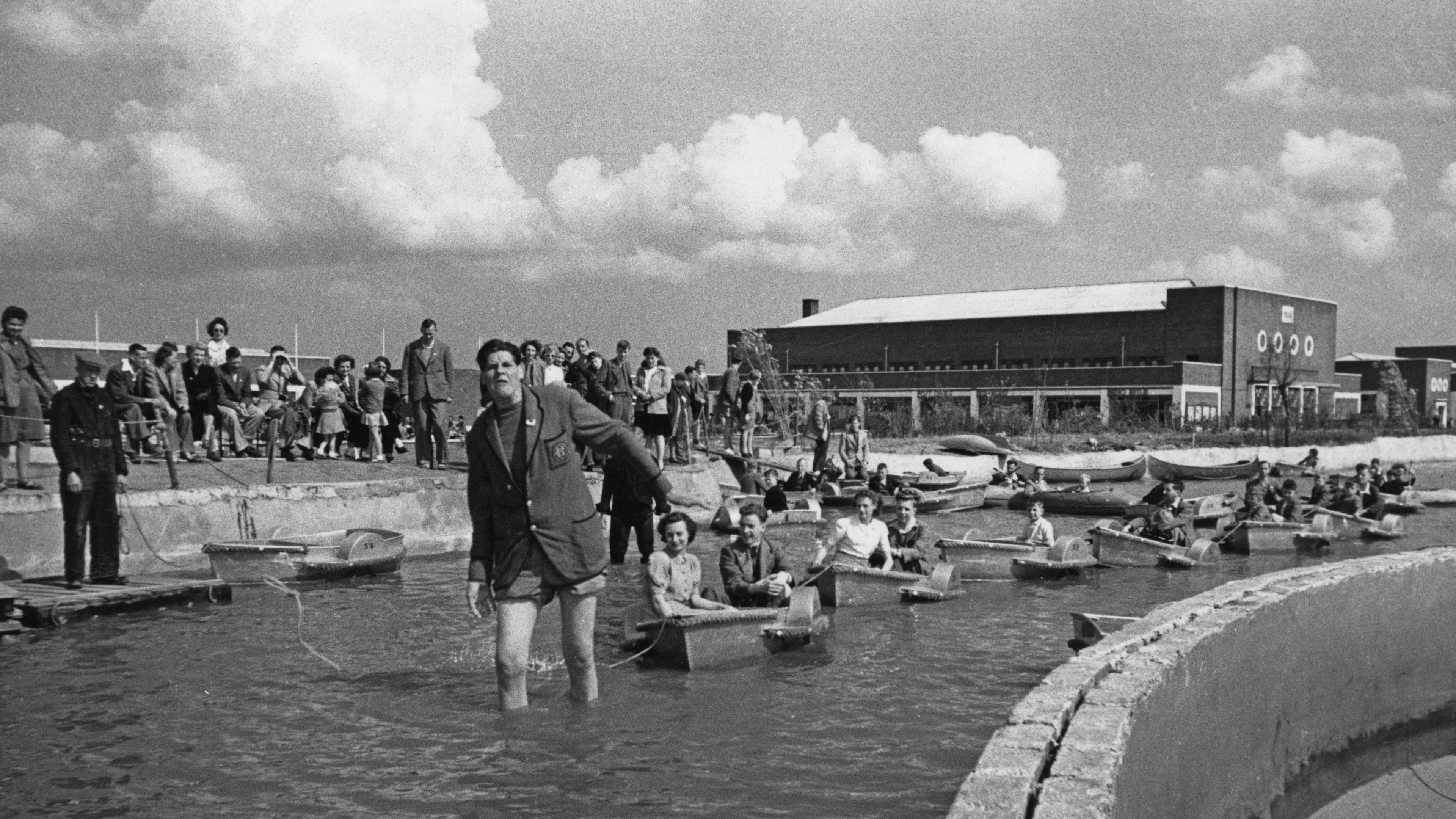
RAF Hunmanby Moor was returned to Billy Butlin in 1945 and continued as a holiday park until the 1980s
Mr Parsons was one of those involved in ensuring they were remembered and said a handful of elderly, surviving veterans were able to attend the installation in 2023.
He said they remembered coming to a place by the sea and believing it would be like the Caribbean.
"They were in for a nasty shock. The sea was so cold they never went back in again."
He said conditions for the men used to much warmer temperatures were not ideal.
"They were stationed in what was a Butlin's holiday camp, half-built at the time and commandeered, they were in huts heated by one pipe and unfortunately disease and illness ran rife."
He said two men died at the camp and "conditions were pretty bleak".
Of those who became air crew nearly a third were killed in action, according to the RAF.
Many of those who survived would return to Britain as part of the Windrush generation.
As to the camp, it was returned to Billy Butlin and its original purpose.
Complete with its own railway station, the camp was one of the largest owned by Butlin with accommodation for up to 11,000 people.
It would close in 1983 and the buildings, some of which had once been home to thousands of Caribbean volunteers, were gradually demolished.
Get in touch
Tell us which stories we should cover in Yorkshire
Listen to highlights from North Yorkshire on BBC Sounds, catch up with the latest episode of Look North.
Related topics
- Published1 April 2023
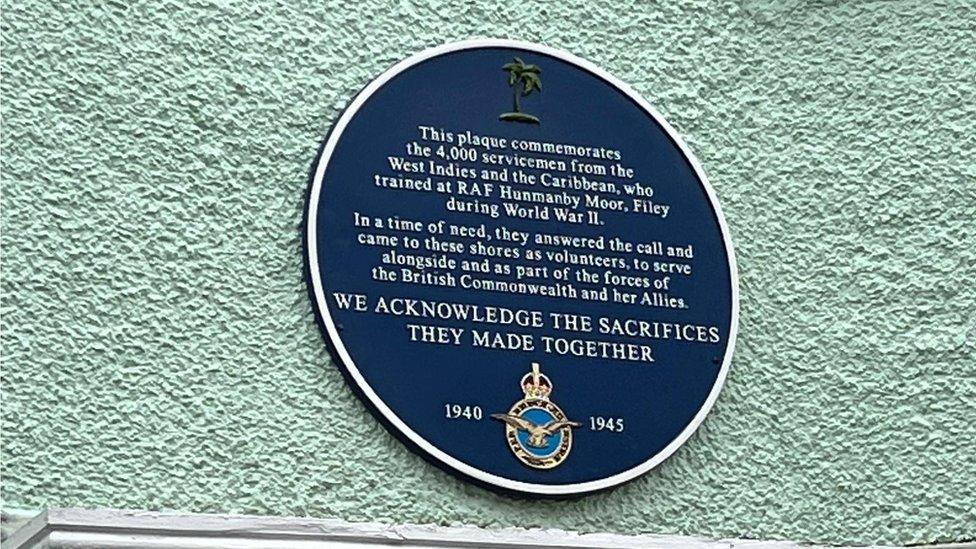
- Published6 January 2023

- Published9 July 2021
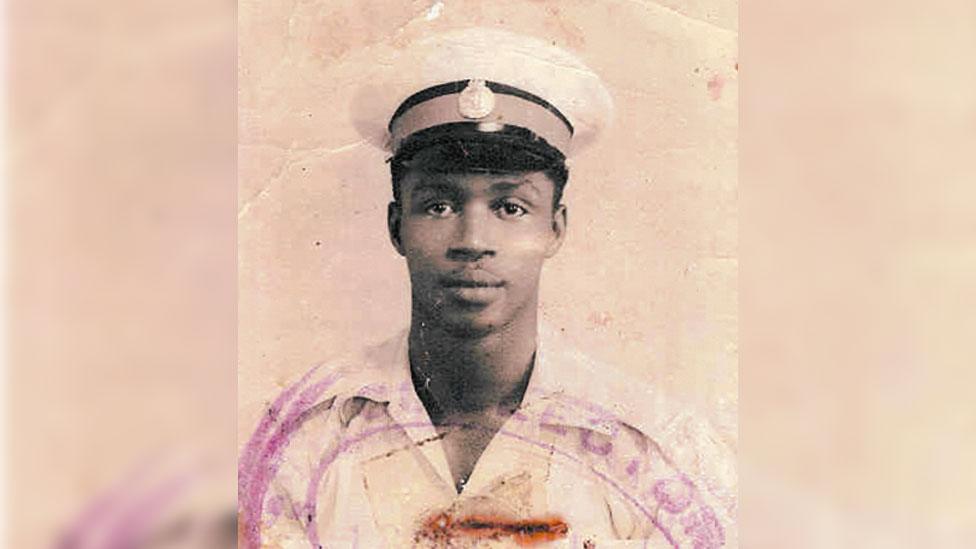
- Published13 May 2015
- Published22 June 2018
